Why aren't there giant mammals in the dinosaur era?
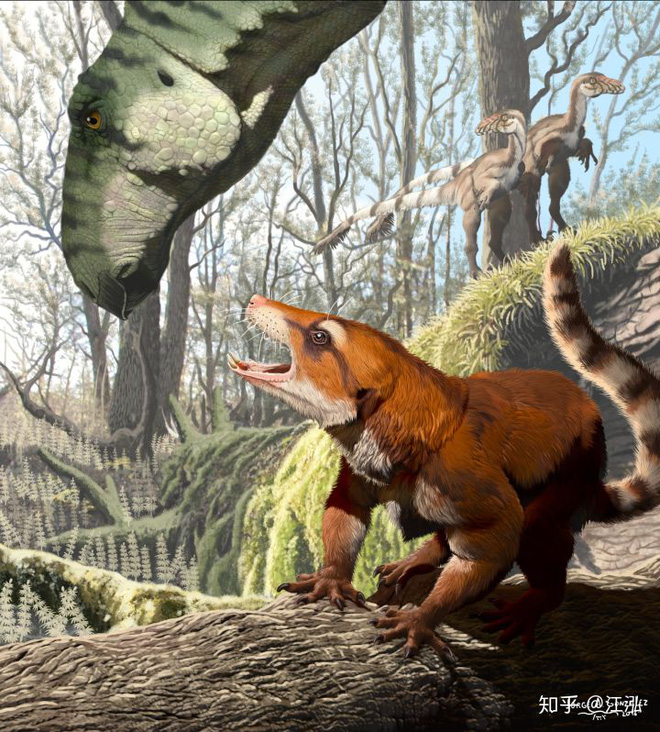
In the dinosaur era, mammals were a small group and they had long been "oppressed" by dinosaurs. During the Mesozoic Era, mammals survived in very small bodies, most of them about the size of today's rats and ferrets. Beast class actually appeared as early as the end of Jurassic period -160 million years ago. Their fossils are found extensively in China's Liaoning province. It is one of China's most famous Jurassic animals (Juramaia sinensis). This species is only 10 cm long, usually living on trees and eating insects.
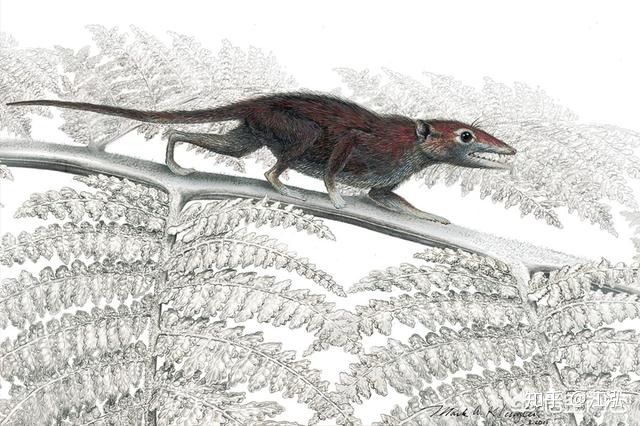
Juramaia is known for its nearly complete joints and joints including the incomplete skull preserved with full teeth. Traces of this ancient mammal were collected in the Daxigou, Jianchang area, from Tiaojishan Formation about 160 million years ago. It was named by Chinese archaeologists Zhe-Xi Luo, Chong-Xi Yuan, Qing-Jin Meng and Qiang Ji in 2011. The discovery of Juramaia provides new insight into the evolution of the mammals by showing that their lineage was different from reptiles 35 million years ago compared to the past. Moreover, its discovery fills gaps in the fossil record and helps correct modern methods based on DNA technology.
Since the advent of Juramaia sinensis in China, mammals on Earth have started to grow in large numbers and have extended their reach worldwide. However, there is no leap in size and they are all animals the size of a mouse.
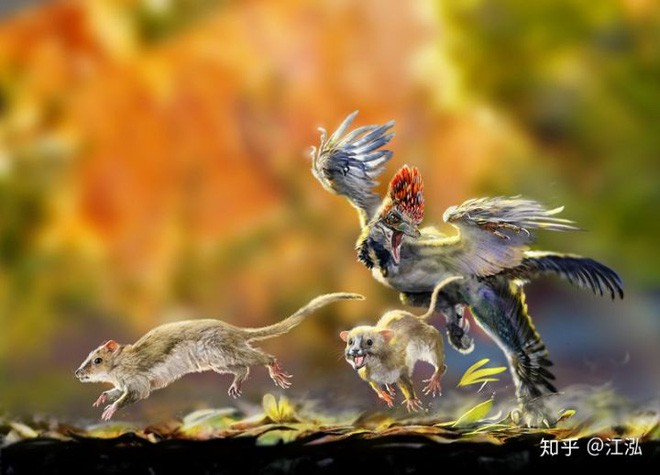
The largest known Mesozoic mammal was also found in western Liaoning, China - Repenomamus, which lived 125 million years ago. They are the largest known animal in the Cretaceous period of the Mesozoic period, with a body length of over 1 meter, weighing about 15 kg, equivalent to a dog.
They are considered devious predators with sharp fangs in their mouth that can be used to bite prey. Paleontologists have found fossils of small dinosaurs that have not been fully digested in their stomachs. But paleontologists have not yet been able to determine whether Repenomamus hunts live dinosaurs proactively or merely eats dead dinosaurs.

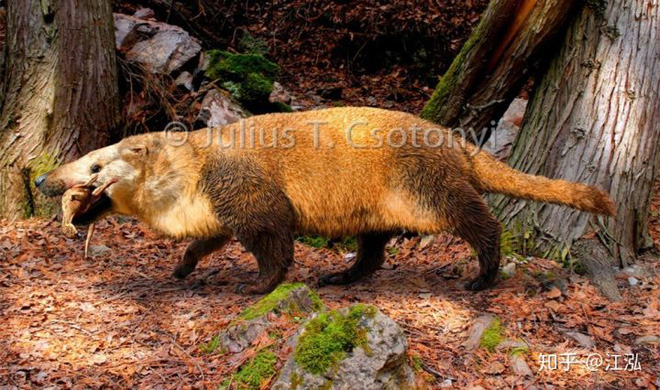
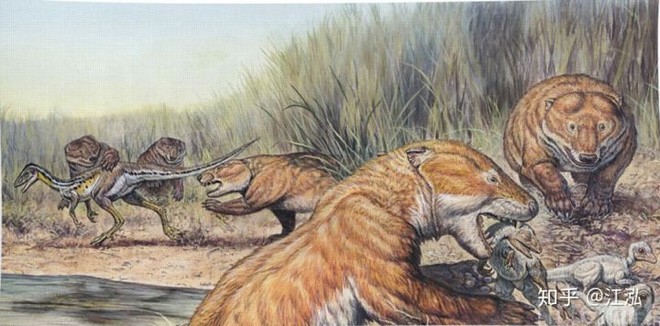
So far, Repenomamus has been considered the largest mammal ever to exist in the age of the dinosaurs, because archaeologists have yet to find fossils of any large mammal. bigger than them in the era of dinosaurs.
So why didn't mammals grow as big as today's lions, tigers or elephants during the dinosaur era? The reason is simple because the existence of dinosaurs has affected the development of mammals. As the most beneficial terrestrial vertebrate at the time, dinosaurs occupied the terrestrial ecosystem, completely eliminating newborn mammals, and eliminating the ability and space for those Mammals grow.
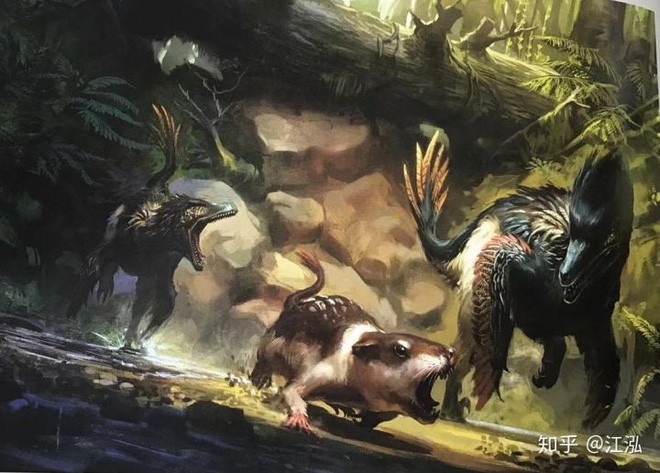
Mammals hunted by dinosaurs.
In fact, when the dinosaurs first appeared, they were also very small. At the end of the Three Gorges (Triassic - a geological era spanning about 200 to 251 million years ago), Cambodia was considered to be the rulers of the terrestrial environment of the Earth at that time.
These ferocious reptiles take the place of predators and also suppress the dinosaurs for a long time, making them unable to grow. It was only in the Triassic period, when the Triassic-Jurassic extinction event, with the extinction of Cambodia, that dinosaurs became bigger and stronger.
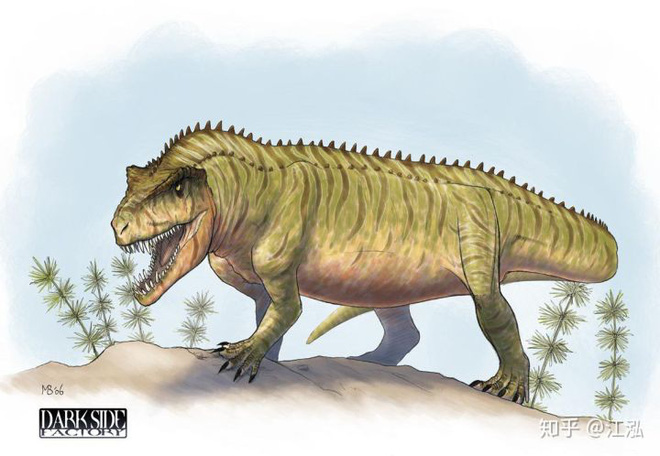
Cambodia.
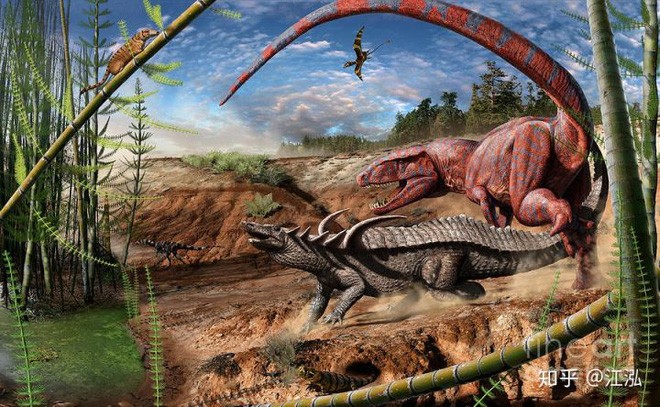
And following an inevitable law of nature, animals also inherit the advantages of the Cretaceous-Paleogen extinction event. With the extinction of large dinosaurs, the size of mammals has gradually increased, but it is different from what we usually think: mammals do not increase in size suddenly, size Their remains small during more than 10 million years after the extinction of the dinosaurs. For example, the Messer rainforest in the rehabilitation picture below is now in Germany 47 million years ago, the size of the mammals at that time still did not exceed 100 kg.
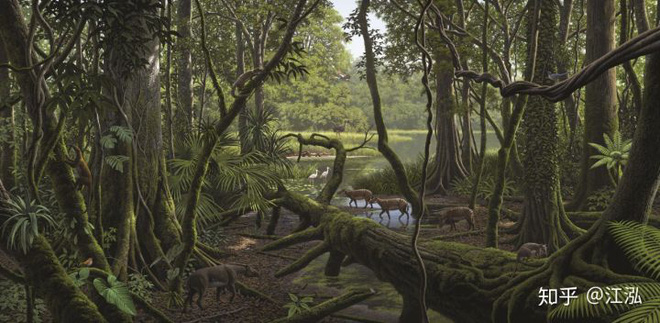
Tropical rainforest of the Messer alternative Eocene.
It was not until about 4,000 years ago that mammals actually began to grow, with large mammals such as Megacerops, Paraceratherium, and Andrewsarchus appearing.
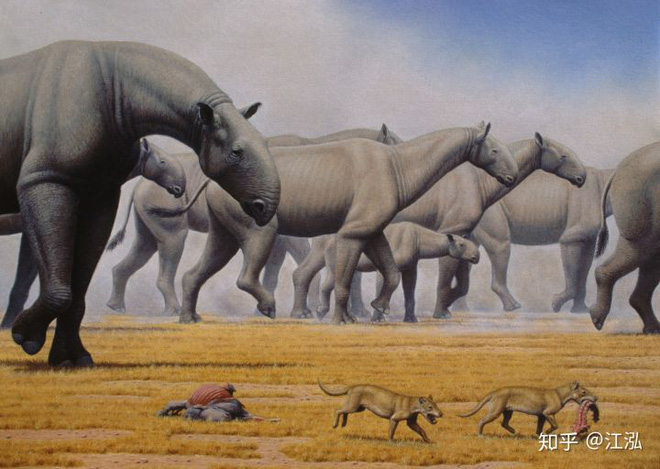
Paraceratherium is a genus of hornless rhino, part of the Indricotheriinae subfamily of Hyracodontidae. Their fossils are found in mainland Eurasia between China and former Yugoslavia. The exact size of Paraceratherium is still unknown because many fossils are missing.
For a new class of animals to grow both in number and size, they need a corresponding growth and development space, and this often requires events like the mass extinction of previous animals.
In a stable ecological environment, new species are often pinched and unable to grow on a large scale and diversified in abundance because older animals have taken up development space. However, recent studies have shown that Jurassic mammals have reached a "boom of diversity" but their size is still very small.
You should read it
- 10 most dangerous prehistoric carnivorous dinosaurs
- Prehistoric home builders living through the Ice Age from the bones of giant beasts became extinct?
- T-rex dinosaur confronts Titanoboa, the largest giant python in Earth's history
- Instructions for taking photos with dinosaurs thanks to AR technology on smartphones
- Human ancestors caused the extinction of animals 4 million years ago
- In terms of size, where does the human being stand for a dinosaur?
- Discover new giant carnivorous dinosaurs, causing headaches for archaeologists
- Series of mysterious stone statues made scientists theorize: Did humans live at the same time as dinosaurs?
May be interested
- Scientists develop AI that can turn brain activity into text
 this ai will monitor nerve data from people while they are speaking.
this ai will monitor nerve data from people while they are speaking. - 10 most bizarre vehicle designs of Batman
 in this article we will take a look at the 10 weirdest cars batman has ever driven.
in this article we will take a look at the 10 weirdest cars batman has ever driven. - British researchers train dogs to detect signs of a Covid-19 infected person
 if research using dogs to detect people with covid-19 is successful, it will open up the opportunity to screen and detect suspected people much faster than using clinical test kit and monitoring symptoms. the current.
if research using dogs to detect people with covid-19 is successful, it will open up the opportunity to screen and detect suspected people much faster than using clinical test kit and monitoring symptoms. the current. - Dunkleosteus: the 'destroyer' of the Devonian
 before the dinosaurs appeared, the earth also existed many species of animals known as the notorious assassins, many of which are from the ocean and dunkleosteus is one of them.
before the dinosaurs appeared, the earth also existed many species of animals known as the notorious assassins, many of which are from the ocean and dunkleosteus is one of them. - Researchers have discovered a new technology that allows phones to be charged via Wi-Fi
 the technology is still in its early stages of testing, but the researchers have created a prototype of the device that will help us better understand how the technology works.
the technology is still in its early stages of testing, but the researchers have created a prototype of the device that will help us better understand how the technology works. - The 'Work from home' toolkit for the IT-er COVID-19 season, deployed in a snap
 in addition to the many implications of the covid-19 epidemic on businesses, there is a new emerging trend: the way covid-19 has completely changed the traditional working culture.
in addition to the many implications of the covid-19 epidemic on businesses, there is a new emerging trend: the way covid-19 has completely changed the traditional working culture.






 Discover new giant carnivorous dinosaurs, causing headaches for archaeologists
Discover new giant carnivorous dinosaurs, causing headaches for archaeologists How long does a dinosaur egg take to hatch?
How long does a dinosaur egg take to hatch? Using Dinosaur 4D + and 4D dinosaur collection
Using Dinosaur 4D + and 4D dinosaur collection The stone wall imprinted over 5000 giant dinosaur footprints in Bolivia
The stone wall imprinted over 5000 giant dinosaur footprints in Bolivia 15 most giant animals in the natural world
15 most giant animals in the natural world